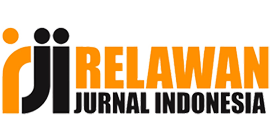Inovasi E-Modul Matematika Menggunakan CBL Berbasis AR Bernuansa Etnomatematika Jakarta
Abstract
This research aims to develop a mathematics e-module using CBL based on Augmented Reality (AR) with Jakarta Ethnomathematics nuances that is valid, able to facilitate students' mathematical critical thinking skills, and get very good responses. The method used was the development method (R&D) with the Plomp model. The Plomp model consists of 3 phases, which are preliminary research, prototype phase, and assessment phase. The results showed that in the preliminary research phase, the results of curriculum analysis, learner needs analysis, and task analysis were obtained so that a solution to improve critical thinking skills could be formulated. In the prototyping phase, an e-module was produced which had an average level of percentage score of material and media validity of 93.44% and 92.31% with “Very Valid” criteria. The posttest results showed that the e-module was able to facilitate students' critical thinking skills seen from the achievement of average completeness which was more than KKTP and classical proportion completeness of more than 75%. Mathematics e-modules using AR-based CBL with Jakarta Ethnomathematics nuances received a “Very Good” response from students of 96.63%. In conclusion, mathematics e-modules using AR-based CBL with Jakarta Ethnomathematics nuances are proven to be categorized as very valid, able to facilitate students' mathematical critical thinking skills, and this module is easy to use in the learning activity.
Keywords: Augmented Reality, Challenge Based Learning, Critical Thinking, E-Module, Ethnomathematics
References
Ajidiana, A. D. D., Mastur, Z., & Wardono. (2023). Development of Android Media with Ethnomathematics Nuances to Improve Students ’ Numeracy Skills. International Journal of Research and Review, 10(9), 357–367. https://doi.org/10.52403/ijrr.20230937
Angraini, L. M., Alzaber, A., Sari, D. P., Yolanda, F., & Muhammad, I. (2022). Improving Mathematical Critical Thinking Ability Through Augmented Reality-Based Learning. AKSIOMA: Jurnal Program Studi Pendidikan Matematika, 11(4), 3533. https://doi.org/10.24127/ajpm.v11i4.5968
Ardiansyah, A. S., & Pratama, N. T. (2021). Belajar dan Berwisata Melalui Objek Wisata Bledug Kuwu pada Bahan Ajar Materi Barisan. JURING (Journal for Research in Mathematics Learning), 4(4), 319. https://doi.org/10.24014/juring.v4i4.14115
Ash-Showy, N. H., Ardiansyah, A. S., Niam, M. A., Sumarti, S., & Qomari, N. (2022). Pengembangan Bahan Ajar Perbandingan Terintegrasi Challenge Based Learning dengan Pendekatan STEM terhadap Kemampuan Berpikir Kritis Siswa. CIRCLE : Jurnal Pendidikan Matematika, 2(02), 145–157. https://doi.org/10.28918/circle.v2i02.6100
Beemt, A. Van Den, Patricia, V., Sonia, G., Riordan, F. O., Gormley, C., Chiang, F., Leng, C., Caratozzolo, P., Zavala, G., & Membrillo-hern, J. (2023). Taking the Challenge : An Exploratory Study of the Challenge-Based Learning Context in Higher Education Institutions across Three Different Continents. Educ.Sci, 13, 234. https://doi.org/10.3390/educsci13030234
Ermawati, D., Riswari, L. A., Hilyana, F. S., & Wijayanti, E. (2024). Pengembangan Buku Cerita Matematis Berbasis Augmented Reality untuk Kemampuan Bernalar Krits Siswa SD. Jurnal Pendidikan Matematika: Judika Education, 7(2), 257–265. https://doi.org/10.31539/judika.v7i2.12454
Estuhono, E., & Efendi, R. (2024). Development of Research-Based Learning IPAS E-Module Using the Book Creator Application in the Merdeka Curriculum. AL-ISHLAH: Jurnal Pendidikan, 16(1), 592–604. https://doi.org/10.35445/alishlah.v16i1.4643
Facione, P. a. (2016). Critical Thinking : What It Is and Why It Counts. Insight Assessment, ISBN 13: 978-1-891557-07-1., 1–28.
Fatra, M. (2024). Pembelajaran Matematik dengan Pendekatan Baru. Rajawali Pers.
Haeriyah, H., & Pujiastuti, H. (2022). Pengembangan Media Pembelajaran E-Modul Interaktif Berbantuan Aplikasi Anyflip pada Materi Lingkaran Untuk Siswa SMP. Primatika : Jurnal Pendidikan Matematika, 11(1), 1–10. https://doi.org/10.30872/primatika.v11i1.1047
Isbadrianingtyas, N., Sa’dijah, C., Dasna, I. W., & Eddy Sutadji. (2024). Development of Challenges-Based Learning Thematic Model to Improve Critical Thinking Skills for Primary School Students. Research and Development in Education (RaDEn), 4(1), 533–542. https://doi.org/10.22219/raden.v4i1.32910
Kamid, Anwar, K., & Sofnidar. (2025). Pengembangan Media Augmented Reality Bernama E-Magazine Education Berbasis Etnomatematika Batik Jambi untuk Meningkatkan Hasil Belajar Matematika Siswa. AKSIOMA: Jurnal Program Studi Pendidikan Matematika, 14(1), 70–82. https://doi.org/10.24127/ajpm.v14.i1.9569
Linia, M., Rachmajanti, S., & Muniroh, S. (2025). The Role of Teacher and English Textbook in Boosting the 7 th Graders ’ Critical Thinking Skills : A Case Study. AL-ISHLAH: Jurnal Pendidikan, 17(2016), 17–28. https://doi.org/10.35445/alishlah.v17i1.5345
Mukarromah, M., Budijanto, B., & Utomo, D. H. (2020). Pengaruh Model Challenge Based Learning terhadap Kemampuan Berpikir Kritis Siswa SMA pada Materi Perubahan Iklim. Jurnal Pendidikan: Teori, Penelitian, Dan Pengembangan, 5(2), 214. https://doi.org/10.17977/jptpp.v5i2.13176
Nazara, E., & Dewi, I. (2023). The Effect of Problem-Based Learning (PBL) Using Video-Based Learning (VBL) on Mathematics Students’ Problem-Solving Ability in SMK Negeri 14 Medan. Jurnal Cendekia : Jurnal Pendidikan Matematika, 8(1), 1–12. https://doi.org/10.31004/cendekia.v8i1.1961
OECD. (2023). PISA 2022 Results The State of Learning and Equity in Education Volume I: Vol. I (Issue 2).
Plomp, T. (2010). An introduction to educational design research (E. Netzodruk. Netherlands Institute for Curriculum Develompent.
Pramulia, P., Yustitia, V., Kusmaharti, D., Fanny, A. M., & Oktavia, I. A. (2025). Ethnomathematics of Al Akbar Mosque Surabaya: Augmented Reality Comics to Improve Elementary School Students’ Literacy And Numeracy. Multidisciplinary Science Journal, 7(6). https://doi.org/10.31893/multiscience.2025277
Raivo, & Ardiansyah, A. S. (2024). Innovation Of CBL-STEM Based Teaching Materials Integrated Learning Videos on Creative Thinking Skills. Jurnal Pengembangan Pembelajaran Matematika (JPPM), 6(1), 27–40. https://doi.org/10.14421/jppm.2024.61.27-40
Sastrawati, E., & Guspita, D. (2022). Implementasi Pembelajaran Menggunakan Modul Berbasis Etnomatematika untuk Meningkatkan Kemampuan Berpikir Kritis Peserta Didik. Primary:Jurnal Pendidikan Guru Sekolah Dasar, 11(4), 1029–1037. https://doi.org/10.33578/jpfkip.v11i4.8958
Setiawan, A. V., Hutauruk, S. M., Meilina, S. A., & Salvia, F. (2024). Enhancing Numeracy Literacy through CBL-STEM : Developing Differentiated Learning Materials with Augmented Reality and Articulate Storyline Integration. AL-ISHLAH: Jurnal Pendidikan, 16(4), 5611–5627. https://doi.org/10.35445/alishlah.v16i4.5789
Susilawati, W., & Suryadi, D. (2020). The Challenge-Based Learning to Students’ Spatial Mathematical Ability. Journal of Physics: Conference Series, 1613(1). https://doi.org/10.1088/1742-6596/1613/1/012039
World Economic Forum. (2015). New Vision for Education Unlocking the Potential of Technology. British Columbia Teachers’ Federation. https://widgets.weforum.org/nve-2015/index.html
Yuherni, Maimunah, & Yuanita, P. (2020). Bahan Ajar Matematika Berbasis Konstekstual Pada Materi Fungsi untuk Meningkatkan Kemampuan Pemecahan Masalah Matematis. AKSIOMA: Jurnal Program Studi Pendidikan Matematika, 9(4), 1293–1306. https://doi.org/10.24127/ajpm.v9i4.2976
Downloads
Published
Issue
Section
License
Copyright (c) 2025 Khurfatul Jannah Jundiah Puja Ahmad, Maifalinda Fatra, Dindin Sobiruddin

This work is licensed under a Creative Commons Attribution-NonCommercial 4.0 International License.


